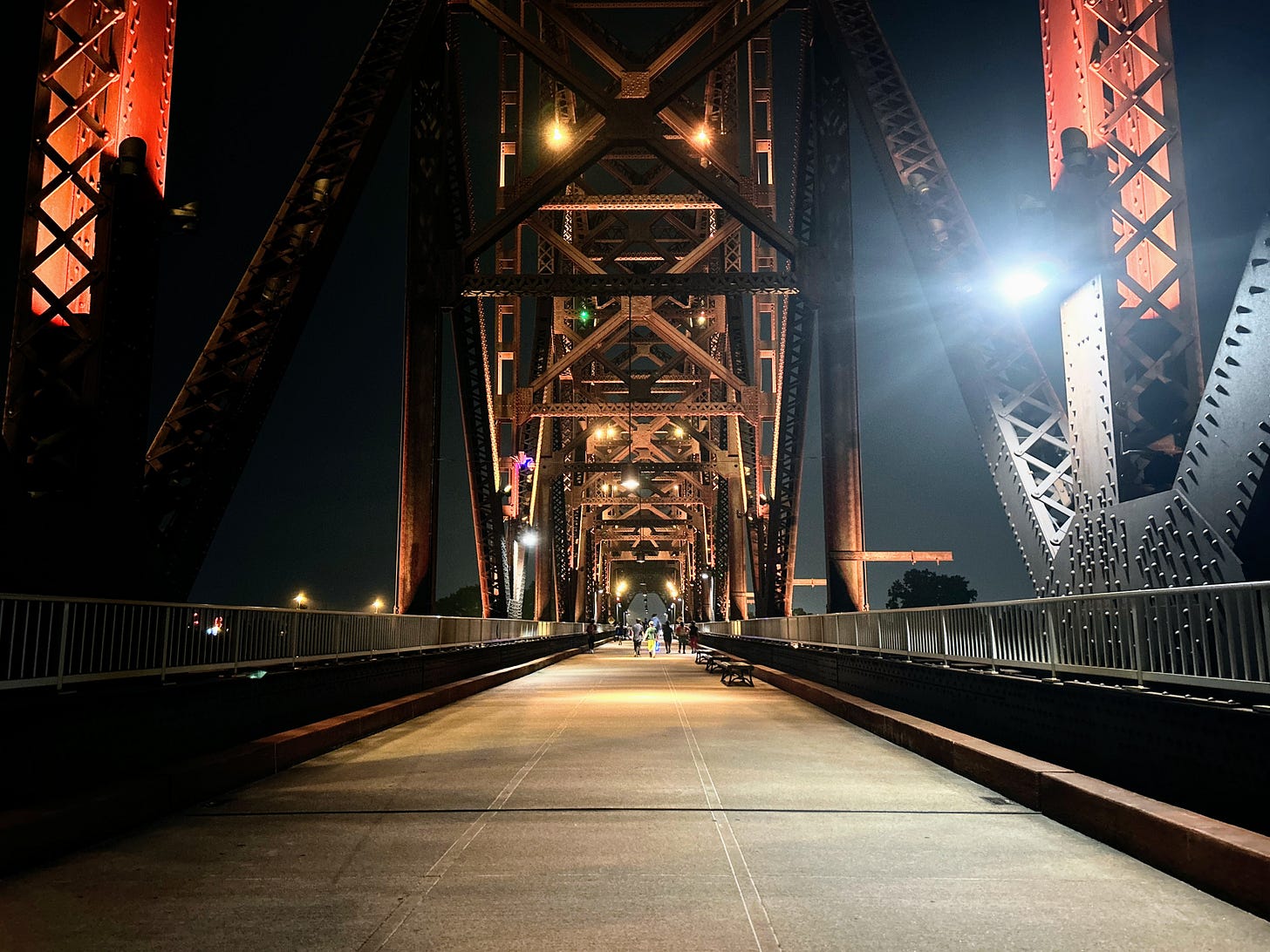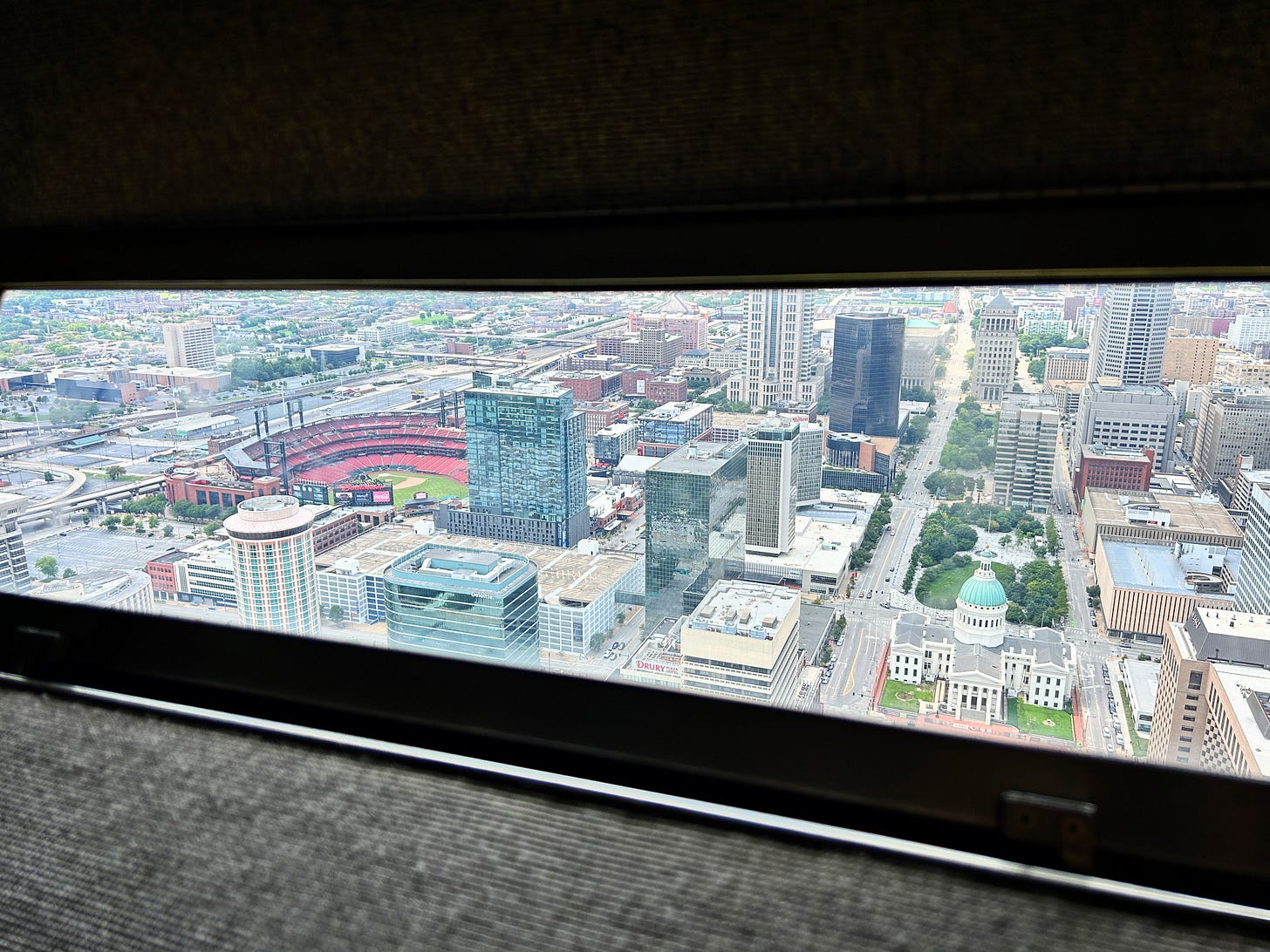It's not the Seine, but it'll do
Wrapping up an epic road trip of America's river cities, just in time to watch Paris' sparkling celebration of the bridges that connect us.

I’m watching the Olympic Games Opening Ceremony from a hotel room in Texarkana, thinking about bridges.
In Paris earlier today, under a steady rain and those romantic bridges, athletes from around the world floated down the Seine River to the cheers of thousands.
I, on the other hand, spent the day driving from Louisville, Kentucky, to the eastern edge of Texas, where my kid and I are capping off a 10-day road trip that has taken us to more than half a dozen of America’s great river cities: St. Louis, Chicago, Port Huron, Detroit, Cincinnati, Louisville, and Little Rock.

With the exception of Chicago, a frequent Olympics bidder, and St. Louis, which hosted the 1904 Summer Olympics, none of these cities will likely see an Olympic Games come to their city. With the eyes and the weight of the world upon them.
The weight of the present is enough for many of these places, thank you very much.
These are cities that have faced boom, bust, and revival over the past 100 years, and many of them are carving out 21st-century identities that are informed by those 20th-century roots but not confined by them.
Know anyone who can relate to that?

Paris has made that transition into the new millennium, a capital city fueled by the kind of tourism that would cripple a place like Detroit, which once had 1.8 million people. That’s nearly the size of Paris today.
But Paris and Detroit (or St. Louis or Chicago) aren’t twins or sisters or even cousins. As I think about it, they are related by those rivers and that water and the people who are willing to get into the weeds with local politics and city planning to figure out how to honor the past while saving the present and preserving the hope of the future.
The Olympics are a strange and often problematic exercise in civic and patriotic engagement, but I have grown to love them in new ways over the years. For this entire road trip, I’ve been looking forward to this night, even though I knew I’d be exhausted from all those hours on the road.
Now I’m even more exhausted thinking about all the effort that went into putting on these Games, and, more poignantly, reviving these American cities.

The bridges on TV brought me right back to these beautiful, resilient, persistent cities we’ve visited this week. I thought about the people who built those skyscrapers and sidewalks and steel trusses that arch over the slowly moving water below. I thought about the people renovating century-old buildings on the verge of collapse. The people investing in their communities, even after everyone else has left.
Because falling bridges mean failing communities. When a river acts as a border, even if a permeable one, it cuts off connection rather than encourages it. Without these bridges, these river cities couldn’t exist.

In Louisville last night, we stumbled upon the Big Four bridge, a pedestrian bridge that connects Kentucky and Indiana. Louisville opened its ramp in 2013. Jeffersonville, across the Ohio River, finished its ramp a year later. Now, more than 1.5 million people use the bridge every year.
Keep reading with a 7-day free trial
Subscribe to The Invisible Thread to keep reading this post and get 7 days of free access to the full post archives.




